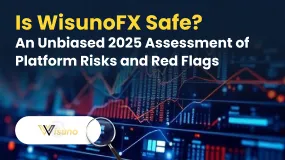Brent oil prices bounced back from the multi-month low touched on Wednesday
Abstract:Brent oil prices bounced back from the multi-month low touched on Wednesday, hedging just over the $80 per barrel level in early morning trading. Crude prices suffered this week, dropping more than 5% on future demand concerns, as well as lowered perceived supply risks from the Israel and Gaza situation. Inflation data from China, the world’s top oil importer, revealed a disinflationary trend that could be the precursor to a slowdown in economic activity that may lead to reduced energy consumption.

OIL
Brent oil prices bounced back from the multi-month low touched on Wednesday, hedging just over the $80 per barrel level in early morning trading. Crude prices suffered this week, dropping more than 5% on future demand concerns, as well as lowered perceived supply risks from the Israel and Gaza situation. Inflation data from China, the worlds top oil importer, revealed a disinflationary trend that could be the precursor to a slowdown in economic activity that may lead to reduced energy consumption. At the same time, US crude inventories are growing, reaching the highest level since February. Completing the bearish scenario for crude is the growing sentiment amongst traders that the conflict in Gaza is unlikely to escalate and disrupt the global oil supply.

EUROPEAN SHARES
Stocks traded higher in Europe on Thursday, extending yesterday's gains as investors' appetite for risk resurges.
The bearish correction that started this week ended on Wednesday, and bull traders are continuing to pile up their exposure in both treasuries and equities as optimism about a peak in monetary tightening remains alive.
Irrespective any significant clues provided by the recent speeches from Fed and ECB officials, the dovish narrative that started with last week's data and FOMC meeting seems to prevail in investors' minds.
The STOXX-50 index registered a sharp rebound from the 4,131.0pts zone and currently challenges the 4,200.0pts level, led higher by utilities and industrial shares. In contrast, energy stocks registered the worst performances so far due to the drop in oil prices.
The recent focus will likely remain on central banks with another batch of speeches, including ECB President Lagarde and Fed Chairman Powell, while the US initial jobless claims looms in the afternoon.


Read more

Vonway Review: A Series of Unfair Account Suspension & Withdrawal Denial Complaints
Have made substantial profits through Vonway, but could not withdraw? Initiated the Vonway withdrawal request, but the same was denied on the grounds of hedging violation? Were your trade orders executed at an unfair price? Have you faced a trading account suspension by the broker without any explanation? These have allegedly become regular for many traders here. In this Vonway review article, we have shared a list of the top complaints against the forex broker.

Advanced Markets Exposed: Faulty Copy Trading & Execution Failures Cost Traders Dearly
Attracted to Advanced Markets for the expert-led copy trading experience? Did you earn profits from the copy trade executed by the expert hired by the forex broker? But did the broker question some trades even though you paid the performance fee to the expert? Is the trade order execution time too slow at Advanced Markets? Do you witness high slippage issues? You are not alone! Many traders have shared these concerns online. In this Advanced Markets review article, we have described some complaints. Take a look!

Is WisunoFX Safe? An Unbiased 2025 Assessment of Platform Risks and Red Flags
Is WisunoFX a safe broker for your money? The answer is not simple. After looking at everything carefully, the platform gets a score of 7.21 out of 10. This means it has both good points and serious risks. For traders who want to research before investing, WisunoFX has two sides: it offers good trading conditions, but it also has some structural and regulatory issues that need careful thought. The broker has been operating for 5-10 years and has built up a presence in the market. However, it's officially labeled as a "Medium potential risk" platform, which cannot be ignored. Before investing, it's important to compare its good points with its bad ones.

A Simple Guide to WisunoFX Rules: Understanding Safety and Risks When Trading
When evaluating any trading company, it is essential to conduct a thorough WisunoFX regulation check first. This broker operates under two distinct sets of rules, which you must understand carefully. First, it has a license from the Cyprus Securities and Exchange Commission (CySEC), which is a trusted European regulator. Second, it has another license from the Financial Services Authority (FSA) in Seychelles, which is located offshore. These two licenses don't give traders the same level of protection. The CySEC license means the broker must follow strict European Union financial rules, while the FSA license has much less supervision. This guide will explain what each license means to traders, look at the company structure behind the brand, and examine the safety factors every potential client should think about.
WikiFX Broker
Latest News
Coinlocally Broker Review: Coinlocally Regulation & Real User Complaints Exposed
A Simple Guide to WisunoFX Rules: Understanding Safety and Risks When Trading
The "VIP" Trap: Inside the Algo-Trading Nightmare at Zenstox
Advanced Markets Exposed: Faulty Copy Trading & Execution Failures Cost Traders Dearly
Exposure: NAGA’s "Phantom Bonus" Trap and the $80,000 Silent Treatment
ATFX Partners with KX to Enhance Real-Time Trading Solutions
RM783,000 Gone: Restaurant Owner Fell Victim to an 85%-Return Investment Scheme
ThinkMarkets Hit By Chaos Ransomware In Major Data Breach
Complete Breakdown: MARKET-HUB Regulation & All Negative Reviews Exposed
Interactive Brokers Opens Access to Brazil’s B3 Exchange
Rate Calc


